Venice Reflection - Re-edited version
Aug 23, 2019 21:35:51 #
Wikipedia:
Venice (/ˈvɛnɪs/, VEN-iss; Italian: Venezia [veˈnɛttsja] (About this soundlisten); Venetian: Venesia, Venexia [veˈnɛsja]) is a city in northeastern Italy and the capital of the Veneto region. It is situated on a group of 118 small islands[3] that are separated by canals and linked by over 400 bridges.[3][4] The islands are located in the shallow Venetian Lagoon, an enclosed bay that lies between the mouths of the Po and the Piave rivers (more exactly between the Brenta and the Sile). In 2018, 260,897 people resided in the Comune di Venezia, of whom around 55,000 live in the historical city of Venice (centro storico). Together with Padua and Treviso, the city is included in the Padua-Treviso-Venice Metropolitan Area (PATREVE), which is considered a statistical metropolitan area, with a total population of 2.6 million.[5]
The name is derived from the ancient Veneti people who inhabited the region by the 10th century BC.[6][7] The city was historically the capital of the Republic of Venice. The 697–1797 Republic of Venice was a major financial and maritime power during the Middle Ages and Renaissance, and a staging area for the Crusades and the Battle of Lepanto, as well as an important center of commerce (especially silk, grain, and spice) and art in the 13th century up to the end of the 17th century. The city-state of Venice is considered to have been the first real international financial center, emerging in the 9th century and reaching its greatest prominence in the 14th century.[8] This made Venice a wealthy city throughout most of its history.[9] After the Napoleonic Wars and the Congress of Vienna, the Republic was annexed by the Austrian Empire, until it became part of the Kingdom of Italy in 1866, following a referendum held as a result of the Third Italian War of Independence.
Venice has been known as "La Dominante", "La Serenissima", "Queen of the Adriatic", "City of Water", "City of Masks", "City of Bridges", "The Floating City", and "City of Canals". The lagoon and a part of the city are listed as a UNESCO World Heritage Site. Parts of Venice are renowned for the beauty of their settings, their architecture, and artwork.[3] Venice is known for several important artistic movements—especially during the Renaissance period—has played an important role in the history of symphonic and operatic music, and is the birthplace of Antonio Vivaldi.[10] Although the city is facing some major challenges (including financial difficulties, pollution, an excessive number of tourists and problems caused by cruise ships sailing close to the buildings),[11][12][13] Venice remains a very popular tourist destination, an iconic Italian city, and has been ranked the most beautiful city in the world
Origins
Although no surviving historical records deal directly with the founding of Venice,[17] tradition and the available evidence have led several historians to agree that the original population of Venice consisted of refugees—from nearby Roman cities such as Padua, Aquileia, Treviso, Altino, and Concordia (modern Portogruaro), as well as from the undefended countryside—who were fleeing successive waves of Germanic and Hun invasions.[18] This is further supported by the documentation on the so-called "apostolic families", the twelve founding families of Venice who elected the first doge, who in most cases trace their lineage back to Roman families.[19][20] Some late Roman sources reveal the existence of fishermen, on the islands in the original marshy lagoons, who were referred to as incolae lacunae ("lagoon dwellers"). The traditional founding is identified with the dedication of the first church, that of San Giacomo on the islet of Rialto (Rivoalto, "High Shore")—said to have taken place at the stroke of noon on 25 March 421 (the Feast of the Annunciation).[21][22]
Beginning as early as AD 166–168, the Quadi and Marcomanni destroyed the main Roman town in the area, present-day Oderzo. This part of Roman Italy was again overrun in the early 5th century by the Visigoths and, some 50 years later, by the Huns led by Attila. The last and most enduring immigration into the north of the Italian peninsula, that of the Lombards in 568, left the Eastern Roman Empire only a small strip of coastline in the current Veneto, including Venice. The Roman/Byzantine territory was organized as the Exarchate of Ravenna, administered from that ancient port and overseen by a viceroy (the Exarch) appointed by the Emperor in Constantinople. Ravenna and Venice were connected only by sea routes, and with the Venetians' isolated position came increasing autonomy. New ports were built, including those at Malamocco and Torcello in the Venetian lagoon. The tribuni maiores formed the earliest central standing governing committee of the islands in the lagoon, dating from c. 568.[23]
St Mark's Basilica houses the relics of St Mark the Evangelist
The Doge's Palace, the former residence of the Doge of Venice
The traditional first doge of Venice, Paolo Lucio Anafesto (Anafestus Paulicius), was elected in 697, as written in the oldest chronicle by John, deacon of Venice c. 1008. Some modern historians claim Paolo Lucio Anafesto was actually the Exarch Paul, and Paul's successor, Marcello Tegalliano, was Paul's magister militum (or "general", literally "master of soldiers"). In 726 the soldiers and citizens of the exarchate rose in a rebellion over the iconoclastic controversy, at the urging of Pope Gregory II. The exarch, held responsible for the acts of his master, Byzantine Emperor Leo III, was murdered and many officials put to flight in the chaos. At about this time, the people of the lagoon elected their own independent leader for the first time, although the relationship of this to the uprisings is not clear. Ursus was the first of 117 "doges" (doge is the Venetian dialectal equivalent of the Latin dux ("leader"); the corresponding word in English is duke, in standard Italian duca, also see duce.) Whatever his original views, Ursus supported Emperor Leo III's successful military expedition to recover Ravenna, sending both men and ships. In recognition of this, Venice was "granted numerous privileges and concessions" and Ursus, who had personally taken the field, was confirmed by Leo as dux[24] and given the added title of hypatus (from the Greek for "consul".)
n 751, the Lombard King Aistulf conquered most of the Exarchate of Ravenna, leaving Venice a lonely and increasingly autonomous Byzantine outpost. During this period, the seat of the local Byzantine governor (the "duke/dux", later "doge"), was at Malamocco. Settlement on the islands in the lagoon probably increased with the Lombard conquest of other Byzantine territories, as refugees sought asylum there. In 775/6, the episcopal seat of Olivolo (San Pietro di Castello; Helipolis[citation needed]) was created. During the reign of duke Agnello Particiaco (811–827) the ducal seat moved from Malamocco to the more protected Rialto, within present-day Venice. The monastery of St. Zachary and the first ducal palace and basilica of St. Mark, as well as a walled defense (civitatis murus) between Olivolo and Rialto, were subsequently built here.
Charlemagne sought to subdue the city to his rule. He ordered the pope to expel the Venetians from the Pentapolis along the Adriatic coast;[26] and Charlemagne's own son Pepin of Italy, king of the Lombards, under the authority of his father, embarked on a siege of Venice itself. This, however, proved a costly failure. The siege lasted six months, with Pepin's army ravaged by the diseases of the local swamps and eventually forced to withdraw in 810. A few months later, Pepin himself died, apparently as a result of a disease contracted there. In the aftermath, an agreement between Charlemagne and the Byzantine Emperor Nicephorus in 814 recognized Venice as Byzantine territory and granted the city trading rights along the Adriatic coast.
In 828 the new city's prestige increased with the acquisition from Alexandria of the relics claimed to be of St Mark the Evangelist, which were placed in the new basilica; winged lions, visible throughout Venice, are the emblem of St Mark. The patriarchal seat was also moved to Rialto. As the community continued to develop and as Byzantine power waned, its autonomy grew, leading to eventual independence
Hi,
I just finished reediting these Venice pictures and hope that you will enjoy them.
Best regards!
Venice (/ˈvɛnɪs/, VEN-iss; Italian: Venezia [veˈnɛttsja] (About this soundlisten); Venetian: Venesia, Venexia [veˈnɛsja]) is a city in northeastern Italy and the capital of the Veneto region. It is situated on a group of 118 small islands[3] that are separated by canals and linked by over 400 bridges.[3][4] The islands are located in the shallow Venetian Lagoon, an enclosed bay that lies between the mouths of the Po and the Piave rivers (more exactly between the Brenta and the Sile). In 2018, 260,897 people resided in the Comune di Venezia, of whom around 55,000 live in the historical city of Venice (centro storico). Together with Padua and Treviso, the city is included in the Padua-Treviso-Venice Metropolitan Area (PATREVE), which is considered a statistical metropolitan area, with a total population of 2.6 million.[5]
The name is derived from the ancient Veneti people who inhabited the region by the 10th century BC.[6][7] The city was historically the capital of the Republic of Venice. The 697–1797 Republic of Venice was a major financial and maritime power during the Middle Ages and Renaissance, and a staging area for the Crusades and the Battle of Lepanto, as well as an important center of commerce (especially silk, grain, and spice) and art in the 13th century up to the end of the 17th century. The city-state of Venice is considered to have been the first real international financial center, emerging in the 9th century and reaching its greatest prominence in the 14th century.[8] This made Venice a wealthy city throughout most of its history.[9] After the Napoleonic Wars and the Congress of Vienna, the Republic was annexed by the Austrian Empire, until it became part of the Kingdom of Italy in 1866, following a referendum held as a result of the Third Italian War of Independence.
Venice has been known as "La Dominante", "La Serenissima", "Queen of the Adriatic", "City of Water", "City of Masks", "City of Bridges", "The Floating City", and "City of Canals". The lagoon and a part of the city are listed as a UNESCO World Heritage Site. Parts of Venice are renowned for the beauty of their settings, their architecture, and artwork.[3] Venice is known for several important artistic movements—especially during the Renaissance period—has played an important role in the history of symphonic and operatic music, and is the birthplace of Antonio Vivaldi.[10] Although the city is facing some major challenges (including financial difficulties, pollution, an excessive number of tourists and problems caused by cruise ships sailing close to the buildings),[11][12][13] Venice remains a very popular tourist destination, an iconic Italian city, and has been ranked the most beautiful city in the world
Origins
Although no surviving historical records deal directly with the founding of Venice,[17] tradition and the available evidence have led several historians to agree that the original population of Venice consisted of refugees—from nearby Roman cities such as Padua, Aquileia, Treviso, Altino, and Concordia (modern Portogruaro), as well as from the undefended countryside—who were fleeing successive waves of Germanic and Hun invasions.[18] This is further supported by the documentation on the so-called "apostolic families", the twelve founding families of Venice who elected the first doge, who in most cases trace their lineage back to Roman families.[19][20] Some late Roman sources reveal the existence of fishermen, on the islands in the original marshy lagoons, who were referred to as incolae lacunae ("lagoon dwellers"). The traditional founding is identified with the dedication of the first church, that of San Giacomo on the islet of Rialto (Rivoalto, "High Shore")—said to have taken place at the stroke of noon on 25 March 421 (the Feast of the Annunciation).[21][22]
Beginning as early as AD 166–168, the Quadi and Marcomanni destroyed the main Roman town in the area, present-day Oderzo. This part of Roman Italy was again overrun in the early 5th century by the Visigoths and, some 50 years later, by the Huns led by Attila. The last and most enduring immigration into the north of the Italian peninsula, that of the Lombards in 568, left the Eastern Roman Empire only a small strip of coastline in the current Veneto, including Venice. The Roman/Byzantine territory was organized as the Exarchate of Ravenna, administered from that ancient port and overseen by a viceroy (the Exarch) appointed by the Emperor in Constantinople. Ravenna and Venice were connected only by sea routes, and with the Venetians' isolated position came increasing autonomy. New ports were built, including those at Malamocco and Torcello in the Venetian lagoon. The tribuni maiores formed the earliest central standing governing committee of the islands in the lagoon, dating from c. 568.[23]
St Mark's Basilica houses the relics of St Mark the Evangelist
The Doge's Palace, the former residence of the Doge of Venice
The traditional first doge of Venice, Paolo Lucio Anafesto (Anafestus Paulicius), was elected in 697, as written in the oldest chronicle by John, deacon of Venice c. 1008. Some modern historians claim Paolo Lucio Anafesto was actually the Exarch Paul, and Paul's successor, Marcello Tegalliano, was Paul's magister militum (or "general", literally "master of soldiers"). In 726 the soldiers and citizens of the exarchate rose in a rebellion over the iconoclastic controversy, at the urging of Pope Gregory II. The exarch, held responsible for the acts of his master, Byzantine Emperor Leo III, was murdered and many officials put to flight in the chaos. At about this time, the people of the lagoon elected their own independent leader for the first time, although the relationship of this to the uprisings is not clear. Ursus was the first of 117 "doges" (doge is the Venetian dialectal equivalent of the Latin dux ("leader"); the corresponding word in English is duke, in standard Italian duca, also see duce.) Whatever his original views, Ursus supported Emperor Leo III's successful military expedition to recover Ravenna, sending both men and ships. In recognition of this, Venice was "granted numerous privileges and concessions" and Ursus, who had personally taken the field, was confirmed by Leo as dux[24] and given the added title of hypatus (from the Greek for "consul".)
n 751, the Lombard King Aistulf conquered most of the Exarchate of Ravenna, leaving Venice a lonely and increasingly autonomous Byzantine outpost. During this period, the seat of the local Byzantine governor (the "duke/dux", later "doge"), was at Malamocco. Settlement on the islands in the lagoon probably increased with the Lombard conquest of other Byzantine territories, as refugees sought asylum there. In 775/6, the episcopal seat of Olivolo (San Pietro di Castello; Helipolis[citation needed]) was created. During the reign of duke Agnello Particiaco (811–827) the ducal seat moved from Malamocco to the more protected Rialto, within present-day Venice. The monastery of St. Zachary and the first ducal palace and basilica of St. Mark, as well as a walled defense (civitatis murus) between Olivolo and Rialto, were subsequently built here.
Charlemagne sought to subdue the city to his rule. He ordered the pope to expel the Venetians from the Pentapolis along the Adriatic coast;[26] and Charlemagne's own son Pepin of Italy, king of the Lombards, under the authority of his father, embarked on a siege of Venice itself. This, however, proved a costly failure. The siege lasted six months, with Pepin's army ravaged by the diseases of the local swamps and eventually forced to withdraw in 810. A few months later, Pepin himself died, apparently as a result of a disease contracted there. In the aftermath, an agreement between Charlemagne and the Byzantine Emperor Nicephorus in 814 recognized Venice as Byzantine territory and granted the city trading rights along the Adriatic coast.
In 828 the new city's prestige increased with the acquisition from Alexandria of the relics claimed to be of St Mark the Evangelist, which were placed in the new basilica; winged lions, visible throughout Venice, are the emblem of St Mark. The patriarchal seat was also moved to Rialto. As the community continued to develop and as Byzantine power waned, its autonomy grew, leading to eventual independence
Hi,
I just finished reediting these Venice pictures and hope that you will enjoy them.
Best regards!
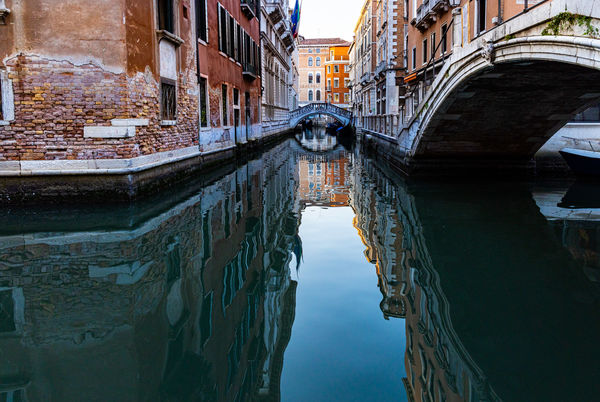
(Download)
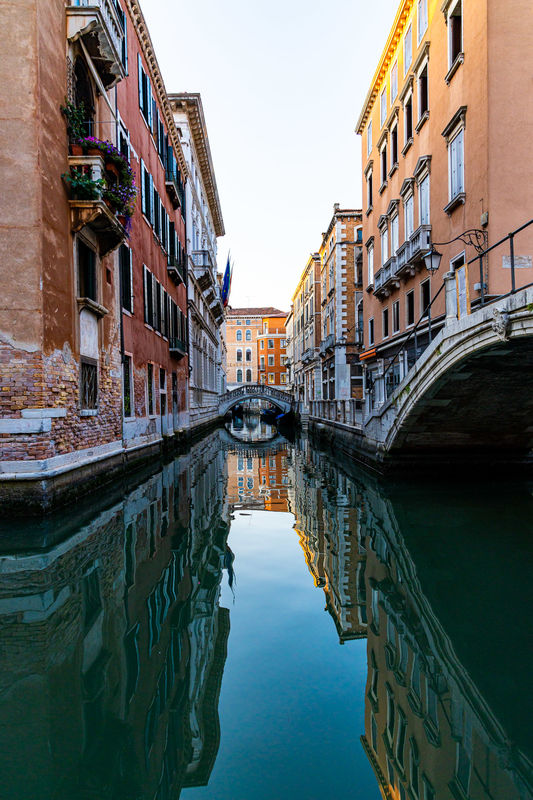
(Download)
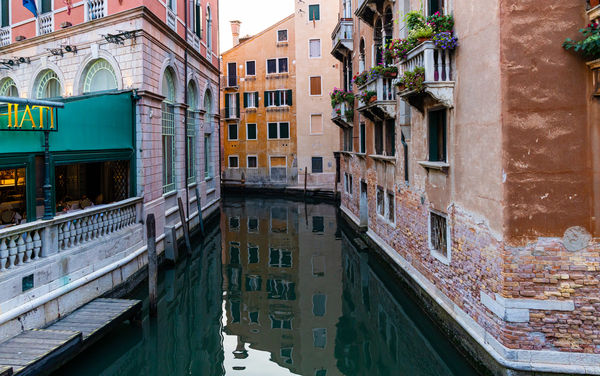
(Download)
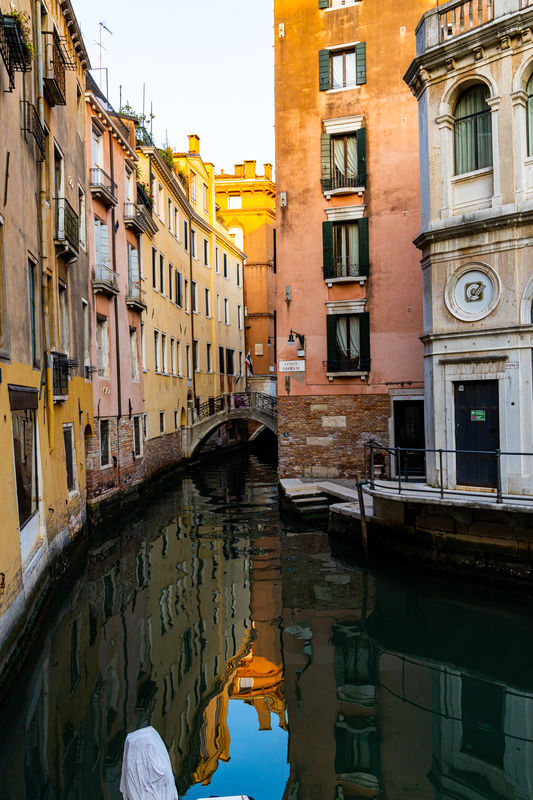
(Download)
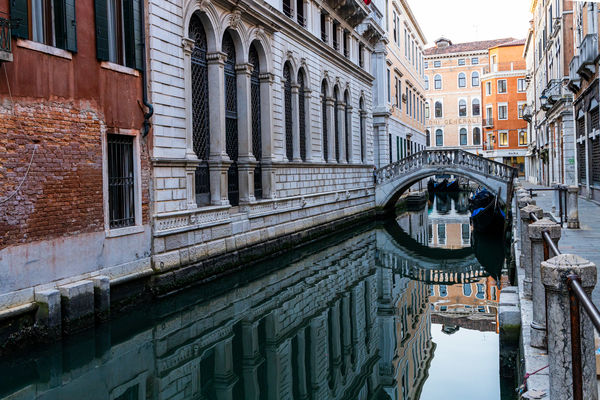
(Download)
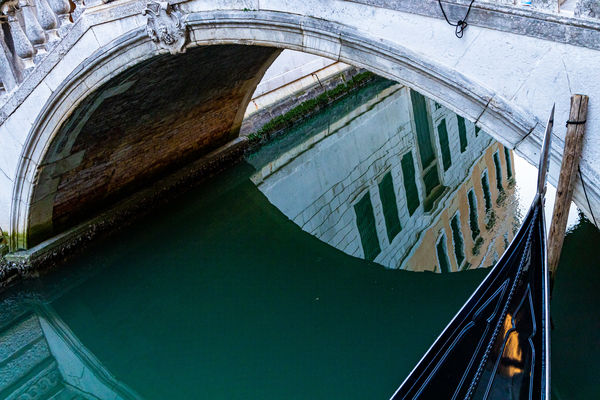
(Download)
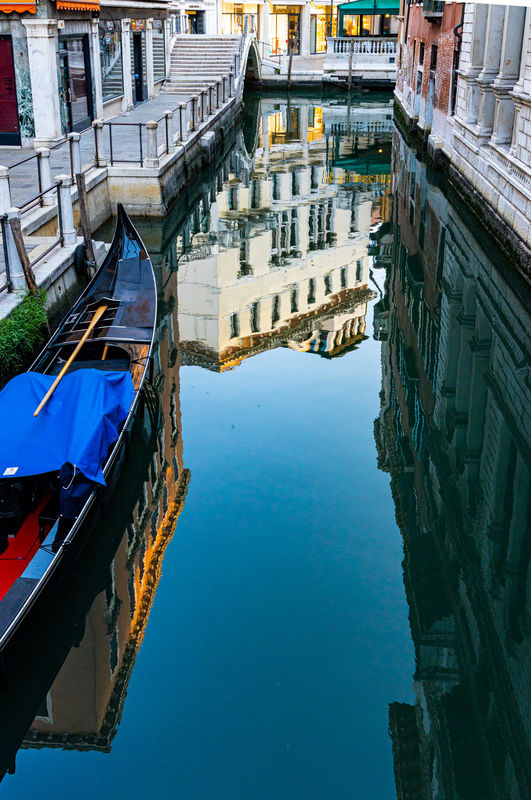
(Download)
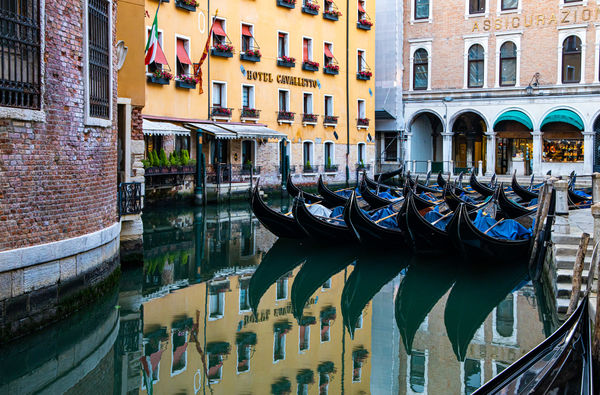
(Download)
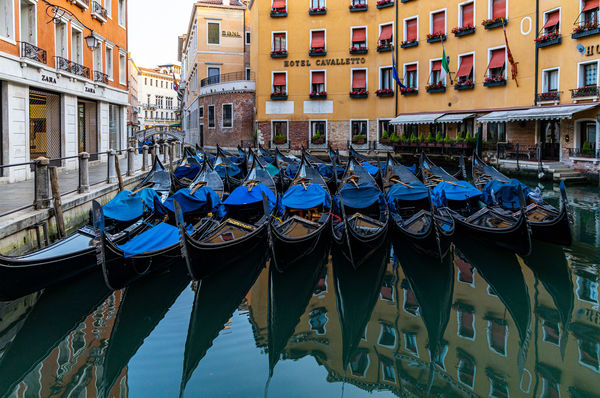
(Download)
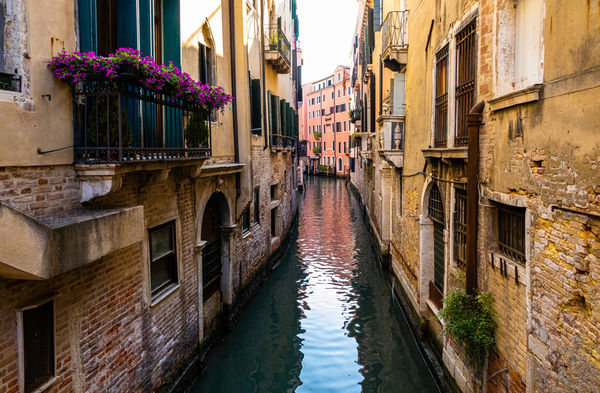
(Download)
Aug 23, 2019 21:45:22 #
Aug 23, 2019 21:45:22 #
Aug 23, 2019 22:30:35 #
Aug 23, 2019 22:43:32 #
I was there once - - 30 years ago.
No digital cameras then - - Pity.
Gorgeous series - - thanks for posting.
No digital cameras then - - Pity.
Gorgeous series - - thanks for posting.
Aug 24, 2019 00:56:13 #
Aug 24, 2019 05:39:46 #
Valenta wrote:
Very nice - pity I will never be able to see it..
You're not missing anything the place has been ruined by tourism especially from huge cruise ships.
Aug 24, 2019 07:47:25 #
FrankR
Loc: NYC
johneccles wrote:
You're not missing anything the place has been ruined by tourism especially from huge cruise ships.
Yeah, you’re not missing anything. Except the most unique and beautiful city on the planet.
Aug 24, 2019 07:49:03 #
Aug 24, 2019 07:55:33 #
Excellent--for my tastes, probably the best set you’ve shown so far. Nice narration, too.
Aug 24, 2019 08:35:50 #
Saigon wrote:
Wikipedia: br br Venice (/ˈvɛnɪs/, VEN-iss; Itali... (show quote)
Wonderful place to see and such a complex system of canals and bridge-over assemblances with walkways included. I often wonder how they first-erected those homes with all that water in the way of the construction process......? Must be quite a task.
Aug 24, 2019 09:43:28 #
Saigon wrote:
Wikipedia: br br Venice (/ˈvɛnɪs/, VEN-iss; Itali... (show quote)


 Superb photos Saigon.
Superb photos Saigon.Aug 24, 2019 09:43:37 #
Really nice. Your images are different from the normal Venice pictures. I like that.
Aug 24, 2019 12:05:26 #
Saigon wrote:
Wikipedia: br br Venice (/ˈvɛnɪs/, VEN-iss; Itali... (show quote)
Beautiful set the effect of the reflections is gorgeous.
Aug 24, 2019 12:24:37 #
Saigon,
Thank you for the wonderful photo sets you provide. Always great quality and I appreciate the additional commentary. Those that do not enjoy additional comments may be better served to just skip over info they don’t like as opposed to attempt stifling things others do appreciate and enjoy. Keep up the excellent work.
Thank you for the wonderful photo sets you provide. Always great quality and I appreciate the additional commentary. Those that do not enjoy additional comments may be better served to just skip over info they don’t like as opposed to attempt stifling things others do appreciate and enjoy. Keep up the excellent work.
If you want to reply, then register here. Registration is free and your account is created instantly, so you can post right away.












